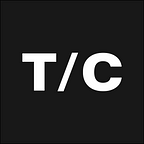Why Emails & Landing Pages Make a Great Team
Email campaigns continue to be one of the top digital marketing strategies around. On average, marketers estimate an ROI of around £35 for every £1 spent on email campaigns, making it a really cost-effective way of engaging your audience.
But even a beautifully crafted email filled with engaging copy and a powerful call to action (CTA) can still have high bounce rates and low conversions. In order for your email campaign to achieve its full potential, you need to make sure that you follow through with an optimised landing page created specifically for your campaign.
The main reason your subscribers are bouncing
Linking emails directly to product pages is one of the biggest reasons why subscribers leave before converting. This might seem like the most direct route for pushing sales, but there are several reasons why it’s not the most effective.
When you link directly to a product page, the information usually won’t be the same as what’s in your original email. This can cause confusion, especially when special promotions are involved. It’s also easy for customers to get distracted by other menu options and products, leading them further away from your offer and giving them an opportunity to change their minds.
Turn subscribers into customers with dedicated landing pages
Instead of sending visitors to existing pages, it’s worth taking the time to create a purpose-built landing page. This is a stand-alone page designed to persuade customers to take a specific action, guiding them down the sales funnel.
As well as delivering clear and consistent content across all touchpoints, this also allows you to personalise your content for specific audiences. Personalising every step of the customer journey will make your subscribers feel special, giving you more chances of engaging your audience and increasing conversions.
So, what’s the best way to create an effective landing page for your email campaign?
1. Repeat the message
The messaging between your email and landing page needs to be consistent. If your email offers 50% off, then your landing page needs to say the same. This reassures your customers by confirming the validity of your offer, giving them the confidence they need to take action.
This is especially important for time-sensitive offers, as customers might wonder if they’ve missed their chance. You also need to clearly state whether or not the prices shown have already been discounted. Remember that nothing is obvious, and you need to deliver clear, direct signposts that guide your visitors through to conversions.
2. Be consistent in style
As well as having consistent content, the overall look should be the same. This lets your visitors know instantly that they’ve landed in the right place, building trust and continuing to guide them towards your end goal.
By using the same colours, imagery and fonts in both your email and landing page, you can link these two touchpoints together for a smooth customer journey.
3. Focus your call to action
Your landing page should be as clear as possible, so it’s best to make one offer at a time. This is especially important if you don’t want offers to be combined, otherwise customers might feel like they’re missing out. It also gives them time to think about which offer to choose, delaying their decision and lowering the chances of a conversion.
Instead, your landing page needs to have one CTA that is linked specifically to your goal. Whether it’s to sign up, download or buy, having one clear objective with no distractions will deliver higher results.
4. Focus their attention
You can also help your customers stay on track by keeping navigation options to a minimum. On a home page, the navigation bar is an essential part of the website build that guides visitors around and lets them explore different areas with ease.
However, landing pages stand alone from the rest of your website and should only have one goal. This means that a navigation bar can quickly become a cause of distraction, giving visitors reasons to leave and taking them further away from your goal.
Removing navigational links will focus your subscriber’s attention on one specific action, giving them less opportunity to get sidetracked and making them more likely to convert.
5. Make it simple
When optimising any area of your website, the key is to create a user-friendly experience. By smoothing out any points of friction, visitors will have no reason to leave and you can guide them straight through to your goal.
This means that everything should be as straightforward as possible. Do this by limiting your form fields to only the essential information, and automatically apply any discount codes to help streamline the checkout process. This will speed up the process, giving your visitors fewer opportunities to leave or become distracted.
Test to see what works
When it comes to conversions, simply changing the colour of your buttons or the alignment of your text can have a big impact on results. Once you have the above basics covered, make sure to A/B test your emails and landing pages to see what engages your audience the best.
Support your emails with a dedicated page
If your emails are getting plenty of clicks but your conversion rates stay low, then it might be your landing page that’s holding you back. When creating your landing pages, think of them as an extension of your email. They should be the same in message and style, and they should be dedicated to one specific conversion goal.
By pairing a great email with a purpose-built landing page, you can give your subscribers a seamless experience with no excuses not to convert.
